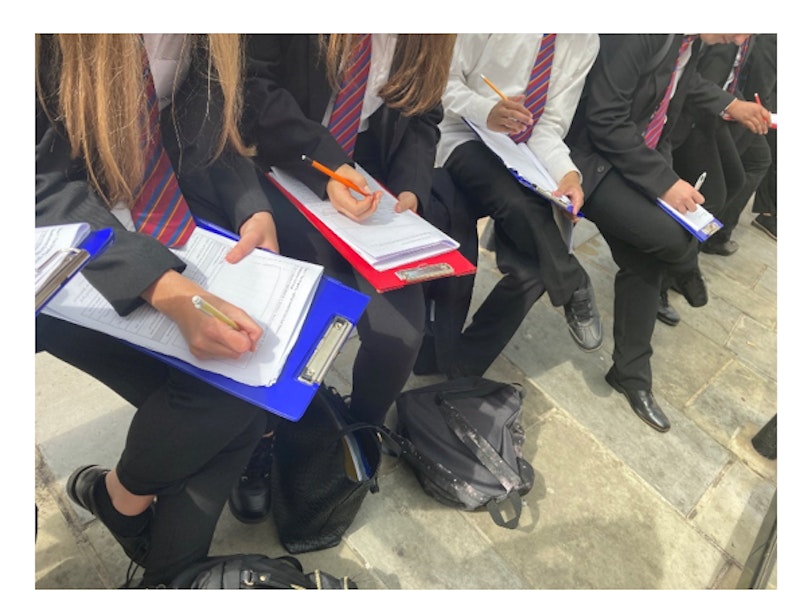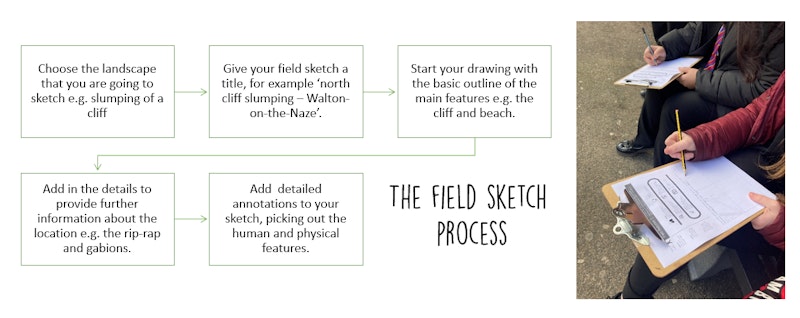Enrichment
Get Outside - Don't Let a Lack of Fieldwork Equipment Stop You!

3rd July 2023
Yes, it's National Fieldwork Fortnight, but for many departments a major obstacle when carrying out fieldwork is a lack of equipment, and in times of dwindling budgets buying fieldwork equipment will (unfortunately) be low on the agenda.
However, fieldwork needn’t be pushed to one side because you feel that you don’t have the right equipment to carry it out. Sometimes the very simplest ideas with little to no equipment can be the most effective!
Traffic counts
Completing a traffic count can lend to itself to a number of different topics including climate change, local area studies and sustainability. All you will need is a clipboard, a timer (phone) and a data collection sheet. You may be able to complete this from your classroom window if it faces a road, from the school car park or by standing just outside of your school, depending on the risk assessment. Before starting ask your students to create a hypothesis, this could be about the types of vehicle that they might see or the direction in which they think the most traffic will be heading. Set a 15-minute timer and count the number of vehicles passing in each direction. This could take the form of a simple tally count for total vehicles, or tallying each type of vehicle that you see. Once completed you could ask students to predict how this might change throughout the day, for example when do they think it will be busiest. Students could also complete a similar traffic count at home. This data collection activity is also perfect for practice data presentation. Students could draw pie charts or bar charts and from this complete a simple analysis. There are also opportunities here to extend it further, for example could this lead to a campaign for slowing down traffic or encouraging more cycling or public transport?

Field sketches
Field sketches are a brilliant way to teach observation and for students to take in their surroundings. Many students worry about completing field sketches as they feel that their drawing skills aren’t good enough, but it is important to remember that a field sketch is not drawn to be on an art gallery wall. Field sketches are also a great way to practice annotations, not just simple labels. When I last completed field sketches with my Year 11s they were surprised at just how far they could see from our school site. They didn’t realise that from our field they could see all the way to the M1 wind turbines, and they had also never realised the gradient from our school down into the town. Sitting and observing our natural surroundings and taking in the range of geographical features all around us is just as much fieldwork as going to the beach and measuring longshore drift. Fieldwork is about collecting information about our surroundings, and a field sketch does just that. Students could also take photographs which could also be annotated.

So don’t let a lack of equipment put you off completing fieldwork. There are so many methods available which don’t require fancy equipment or locations. Students need to know about their local geography and have a geographical understanding of the location in which they live, go to school and spend most of their time. Simple investigations will help you and your students to make better sense of the local geography and perhaps enable you all to see a different side of their everyday surroundings.
You might also like

40 Maps That Explain the World
3rd February 2016

Carbon Capture: phasing out fossil fuels whilst burying the evidence
6th November 2014

Stunning 3D Visualisation of a Tornado
24th May 2015

How to Make An Attractive City
24th May 2015

China's Polluted Cities - A Photo Blog
31st May 2015

The Destruction of the Aral Sea
21st October 2015

Permafrost Explored
2nd November 2015
Extra curricular Geography - Ashcloud apocalypse
15th November 2015